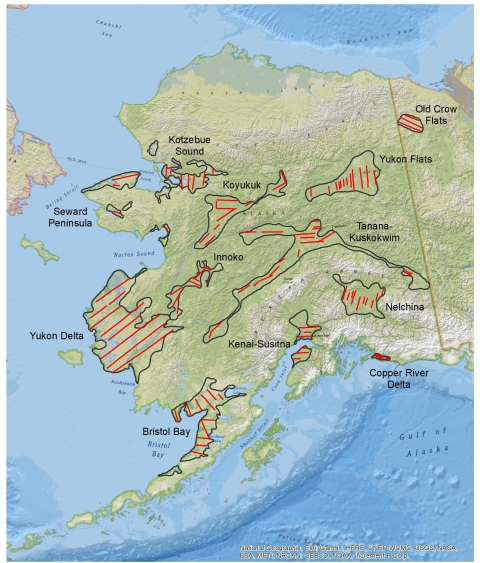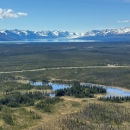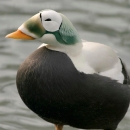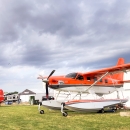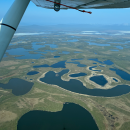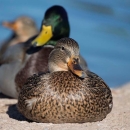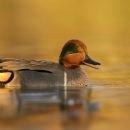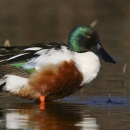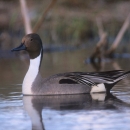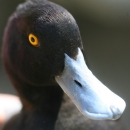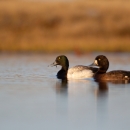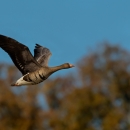The Waterfowl Breeding Population and Habitat Survey (WBPHS) has been conducted annually since 1955 (1957 in Alaska) by the U.S. Fish and Wildlife Service (FWS) and Canadian Wildlife Service to estimate the spring abundance of dabbling ducks and other waterfowl of management concern in their principal breeding areas of North America. The survey is continental in scope requiring numerous survey flight crews across North America, but the Alaska Region of Migratory Bird Management is responsible for completing the portion of the survey within the state of Alaska and the Canadian Yukon from mid-May to early June of each year. Waterfowl abundance estimates from this survey support a decision-making framework for harvest management of ducks through Adaptive Harvest Management (AHM).
In addition to supporting management of dabbling duck harvest through AHM, the Alaska portion of the WBPHS also provides data on Pacific white-fronted geese and the western population of tundra swans. Such data are used by the Pacific Flyway Council to set annual harvest regulations for those species in the Pacific Flyway per their respective Management Plans. The Alaska survey crew also documents sandhill cranes, loons, grebes, and eagles. Combined, the survey results are not only used to establish annual hunting regulations, but also to monitor long term trends in migratory bird populations and to inform various conservation and management decisions at the state, flyway, and continental levels.
The Alaska region maintains an archived record of the historical dataset (1957 to present) for strata 1-12, independent of the main full North American dataset managed by the Headquarters Region, Migratory Bird Management.


